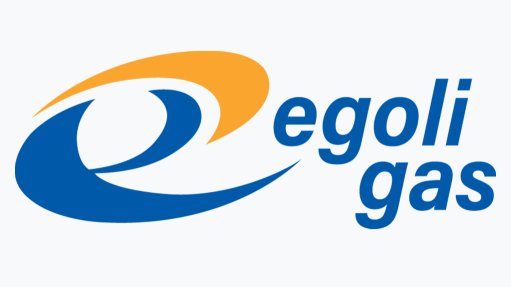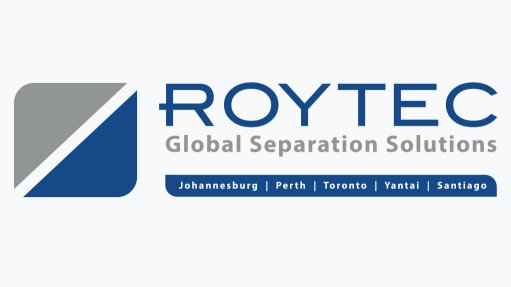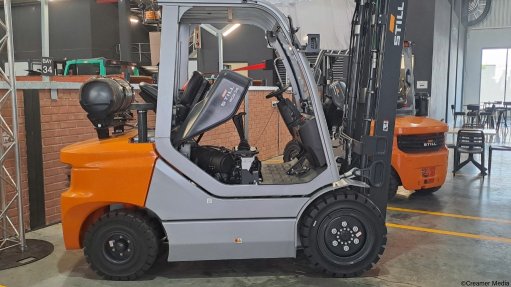OMRON’s reducing downtime with machine safety
This article has been supplied.
Today’s manufacturers are under pressure to be more flexible, reduce downtime, increase efficiency and, above all, keep personnel safe.
Today’s manufacturers are under pressure to be more flexible, reduce downtime, increase efficiency and, above all, keep personnel safe. These efforts are complicated but yet another requirement: the successful management of external influences. These factors are difficult to predict, and effective adaptation can be challenging when their true effects become known. Fortunately, the right machine safety technology can help companies reduce the impact of unforeseen events and keep productivity levels high.
To better understand how unexpected local and global phenomena can impact manufacturing, let’s use the recent COVID-19 pandemic as an example. Due to the many changes to local regulations that are taking place worldwide, most manufacturers had to limit the number of people allowed in their facilities during a single shift. This helps ensure employee well-being, but it also has an unexpected impact on factory operations. A company’s machine safety expert might not be onsite when a functional safety problem arises, and this, in turn, will affect the production line, increase downtime, and – depending on the type of failure – even require overtime to identify and solve the underlying cause.
How does a manufacturer overcome this difficult situation?
One response may be to implement a functional safety program, but if there’s no in-house engineer trained to handle machine safety challenges, it may be necessary to rely on a third party. This gives rise to other factors like availability, response times, and unplanned costs, which again can impact equipment availability. It’s critical to provide onsite personnel with sufficient tools for troubleshooting in an intuitive way without the need for additional interfaces or complex technologies. Intelligent safety devices, flexible configurations, and visualization can simultaneously improve safety and streamline productivity strategies.
Safety devices with clear status indicators are a great ally when it comes to protecting employees and keeping machines up and running. For example, input safety devices like safety light curtains (SLCs) or safety scanners that have clear status indicators help operators identify obstructions, faults, or special configurations without a dedicated interface.
This reduces downtime by making it easier to identify and fix conditions that would otherwise require a higher level of maintenance skills and additional tools. An example of this is the Omron F3SG-SR light curtain, which employs area beam indicators (ABIs) as a simple yet powerful tool for visualization. Each ABI is its beam, but the whole set is organized into four light groups. This has a tremendous impact during adjustments by simplifying SLC alignment, particularly in large areas where the human eye might not be as accurate as desired.
Adding a human-machine interface (HMI) to a safety system provides a level of visibility into the safety controller that was unimaginable just a few years ago. New developments offer safety monitor functions on the HMI by default, which means that no additional time is required for the development. Besides providing status information, this safety monitor function can retrieve and display safety hardware configuration data without requiring anyone to open the control panel. This means that companies can keep people away from dangerous electrical equipment and lower the probability of anyone getting hurt while still providing access to clear information necessary to complete operational tasks.
A common challenge on the factory floor is troubleshooting intermittent stops in a system. These can be tough to sort out if there’s no access to additional data like event logs or error codes. Maintenance teams face the challenge of monitoring the system until the failure happens again, with the hope of somehow being able to identify what went wrong. Such situations can quickly become overwhelming since they consume large amounts of time and lead to unexpected costs. Omron helps manufacturers tackle these issues with Safety Data Logging, an embedded tool in the most recent generation of NX Series safety controllers that logs up to 100 inputs. This allows even inexperienced workers to identify the cause of a sudden line stoppage and helps operators maximize productivity via the HMI.
Functionality that simplifies maintenance speeds up safety restoration and enables easy access to diagnostic information without complex or dedicated interfaces should be part of any safety system. With these features as part of a machine, the operational and maintenance teams can take the necessary steps to maintain a safety system.
From the safety controller perspective, the latest generation on the market makes it possible to store programs and settings on an SD card inserted into the communication control unit. When the safety CPU unit needs to be replaced, the stored programs and settings can be easily copied to a new unit using the SD card. This eliminates the need for advanced training or dedicated tools for the same task and will ultimately save costs and contribute to higher productivity. Another benefit of an interactive solution is the option to have settings data automatically downloaded when replacing a safety I/O unit. Replacing a safety I/O unit with previous generations implies a reconfiguration of the safety system, which at the very least involves support from the manufacturer and sometimes assistance from a safety expert.
Another challenge faced by maintenance teams is the diagnosis of safety light curtain problems, particularly when they’re installed in press and welding applications. It can be puzzling to identify the real root cause of any SLC that’s activating without a noticeable cause. Besides the ABIs, and in combination with the Intelligent Tap functionality, the Omron F3SG-SR series provides a Bluetooth interface to connect a cell phone through SD Manager 3 for monitoring and troubleshooting in real time. Operators can have easy access to basic product information, an incident light indicator to identify the SLC’s ambient light levels, status information to see how the safety and non-safety signals are switching, and maintenance information logs to track errors and warnings and suggest possible actions to take.
Based on ISO 13849, in any safety system using a programmable safety relay or a safety PLC, the entire system needs to go through a verification and validation process before going into the RUN mode to ensure that all safety functions work according to design. Once this process is completed, the system will create a unique safety signature (or ID) that will never change unless the configuration changes. If someone were to add a safety door switch to the machine, for example, this will require changes to the hardware configuration as well as to the program. Before starting the machine again, the validation process needs to be applied so that the system can create a new safety signature.
In the past, only system integrators used safety signatures as part of their guarantee at the end of project commissioning. It soon became clear, however, that it was in everyone’s interest to be aware of any unforeseen safety program modifications that could call into question the system’s actual safety level, such as the addition or removal of a new safety device without a risk assessment process to justify it. To avoid exposing operators to this scenario, manufacturers should check the system’s safety signature at the beginning of each shift to make sure the system remains the same. Based on our previous comments, visualization is the key, and showing the safety signature in a human-machine interface helps operators access this information upon starting their shift.
According to IEC 62061 and ISO 13849-2:2015, the purpose of the validation process is to confirm that the safety design supports the overall safety specifications for the machine. Testing must be carried out to complete the validation since it’s always complementary to analysis, and often necessary. Normally, running a functional test as part of the validation process for a commissioning project can be tedious, even for its designer. Usually, the person in charge of the safety system design must be onsite, and additional people may be required depending on the system size. The entire process could take hours or possibly days.
Functional safety in combination with digitalization initiatives helps reduce downtime and the need for people to be exposed to hazardous machine motion during operational or maintenance activities. This can be achieved when safety devices are monitored remotely so that there’s little reason to step inside hazardous areas simply to check the alarm of a safety device.
The F3SG-SRA is also an example of an intelligent device thanks to its IO-Link capabilities that make it possible to read safety data, status, and events, store this data in a database, and display relevant information on an HMI for quick diagnostics. This is just another example of how common challenges faced by maintenance teams are simplified by providing the right technology and access to personnel on the factory floor. The ability to access safety data in real-time and organize it into meaningful information creates enormous possibilities for manufacturers. Furthermore, working with intelligent safety devices helps reinforce preventive maintenance efforts by accessing safety data in real time and organizing it into meaningful information.
Machine guarding in combination with flexible manufacture and intelligent devices is driving a new approach to project commissioning, not only to fulfil functional requirements but also to take into consideration the complete life cycle of a machine. This helps to reduce the impact of external influences, since the strategy of making machines more intelligent and improving their networking, in turn, improves efficiency, reduces costs, and opens the door to the factory of the future. With help from Omron, manufacturers can combine digitalization and functional safety to empower their personnel to design and implement safety solutions that will protect them and keep machines running
Article Enquiry
Email Article
Save Article
Feedback
To advertise email advertising@creamermedia.co.za or click here
Comments
Press Office
Announcements
What's On
Subscribe to improve your user experience...
Option 1 (equivalent of R125 a month):
Receive a weekly copy of Creamer Media's Engineering News & Mining Weekly magazine
(print copy for those in South Africa and e-magazine for those outside of South Africa)
Receive daily email newsletters
Access to full search results
Access archive of magazine back copies
Access to Projects in Progress
Access to ONE Research Report of your choice in PDF format
Option 2 (equivalent of R375 a month):
All benefits from Option 1
PLUS
Access to Creamer Media's Research Channel Africa for ALL Research Reports, in PDF format, on various industrial and mining sectors
including Electricity; Water; Energy Transition; Hydrogen; Roads, Rail and Ports; Coal; Gold; Platinum; Battery Metals; etc.
Already a subscriber?
Forgotten your password?
Receive weekly copy of Creamer Media's Engineering News & Mining Weekly magazine (print copy for those in South Africa and e-magazine for those outside of South Africa)
➕
Recieve daily email newsletters
➕
Access to full search results
➕
Access archive of magazine back copies
➕
Access to Projects in Progress
➕
Access to ONE Research Report of your choice in PDF format
RESEARCH CHANNEL AFRICA
R4500 (equivalent of R375 a month)
SUBSCRIBEAll benefits from Option 1
➕
Access to Creamer Media's Research Channel Africa for ALL Research Reports on various industrial and mining sectors, in PDF format, including on:
Electricity
➕
Water
➕
Energy Transition
➕
Hydrogen
➕
Roads, Rail and Ports
➕
Coal
➕
Gold
➕
Platinum
➕
Battery Metals
➕
etc.
Receive all benefits from Option 1 or Option 2 delivered to numerous people at your company
➕
Multiple User names and Passwords for simultaneous log-ins
➕
Intranet integration access to all in your organisation





















